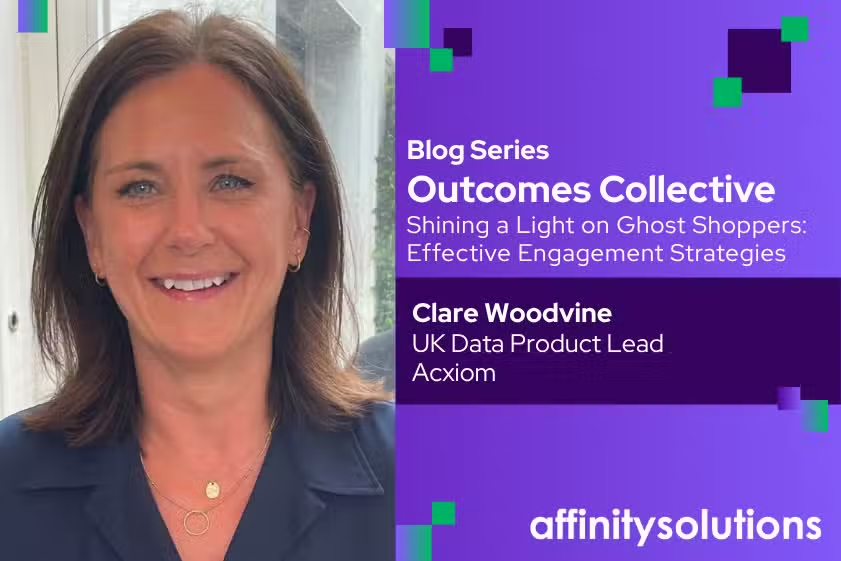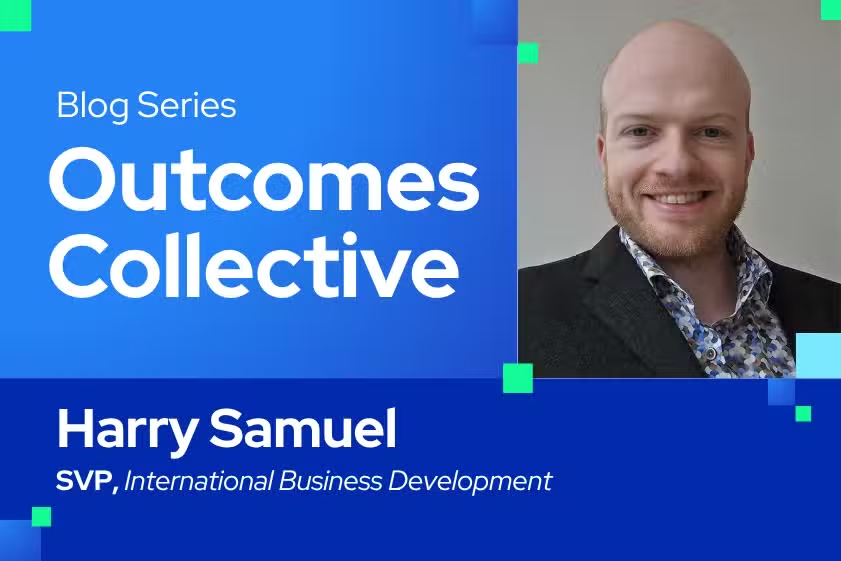In this partner edition of the Outcomes Collective blog series, we have an insightful contribution from Clare Woodvine, UK Data Product Lead at Acxiom, our partner across the pond. Clare is instrumental in helping brands drive value from our joint product, InfoBase® Purchase Transactions, powered by Affinity Solutions. With over 30 years of experience in analytics, Clare’s expertise in consumer insight and segmentation across industries, have been instrumental in helping key clients leverage data effectively. As the UK Data Product Lead, she ensures Acxiom’s data solutions evolve to meet market needs, developing best practices and maintain consumer trust.
In this article, Clare discusses the significant challenge retailers face in identifying “ghost shoppers” who transact anonymously in-store. She highlights the limitations of traditional loyalty programs and details how comprehensive, third-party purchase data can help retailers create more effective engagement strategies.
Shining a Light on Ghost Shoppers: Effective Engagement Strategies
The importance of recognising and communicating with the people who purchase (or are at least interested in) your products should be the cornerstone of any marketing strategy. Identifying in-store customers is a great way of developing a complete profile of their spending patterns and multi-channel shopping habits. This then helps guide a complete marketing strategy — but as always, the challenge is to get the proposition right and use the data in the correct way.
There are many ways in which a retailer can connect a store sale with an individual. Options range from a comprehensive loyalty programme — such as Tesco’s Clubcard or Boots’ Advantage Card — to an email address request at point of sale. Other methods of data capture can include mobile apps, in-store Wi-Fi and even more sophisticated options such as beacons that detect presence and movement in stores. Each of these channels offers varying levels of success in terms of types of data capture, willingness of the customer to partake and level of required investment.
At the other end of the scale, the ability to identify and understand “ghost shoppers” (the segment of customers who simply transact and leave without ever identifying themselves as they shop in-store) continues to be one of the most difficult challengers that retailers face.
Evaluating the Effectiveness of Loyalty Programs
Some of the established loyalty programs do a brilliant job of knowing who, where and when customers shop — and loyalty program utilisation can be phenomenal if the value exchange is worthwhile (estimates suggest nearly 80 percent of transactions in Tesco involve the use of a Clubcard), whereas others have lower utilisation rates, and thus can be problematic for the retailer.
In stores where customers shop on a more occasional basis, data capture can be low or non-existent, meaning that large swathes (maybe even 90% or more) of transactions are carried out by people they know nothing about (the “ghost shoppers.”) Even where data capture is higher — such as in M&S where YouGov estimates 43% of regular shoppers hold a Sparks card — still well over half of transactors go untraced.
A New Era in Retail Transaction Insights
Acxiom’s data solution — InfoBase® Purchase Transactions, powered by Affinity Solutions — helps to solve this industry-wide retail challenge. By merging the power of Acxiom’s consumer file InfoBase with detailed transactional spend on over 10m UK cardholders, an additional layer of unique insight can help retailers to accurately understand actual spend behaviour on not only their own customers but also that of their competitors.
This will allow retailers to understand and reach their own customers to drive personalised experiences and data-driven communications for both their known and unknown customers across the right mix of channels and platforms. As well as being able to talk to their own customers, brands can now successfully communicate with those of their competitor retailers.
So, whether it’s the ability to send a relevant ad to a competitor’s customer, understand the differences in consumers who spend with your main competitors or simply to ensure you’re engaging with your own customers, Acxiom can help you to get your proposition and marketing strategy right.
With spend across almost 2,000 retail brands over the past 12 months — including fashion, food and drink, grocery, health, beauty and household retailers — Acxiom is ideally positioned to help you to maximise on customer engagement potential.
“Where we all spend our money is an important reflection of our consumer needs, behaviours and attitudes. This is vital customer intelligence for any brand seeking to craft relevant and highly tailored customer experiences. This transactional data offers the most authentic and dependable reflection of shifting spending patterns, and this makes a powerful combination with our core InfoBase offering to enrich our clients’ understanding of customer behaviours. By utilising this intelligence and staying attuned to evolving spending trends and behaviours, our clients can further elevate their marketing efforts, ensuring a more personalised and impactful customer journey.”
— David Keens
VP Product, Acxiom
Clare Woodvine has extensive experience in data driven marketing, beginning her career in analytics 30 years ago when database marketing was rapidly evolving. With a strong background in consumer insight and segmentation, she has worked with multiple organisations across industries developing data solutions that help businesses engage with consumers alike. Since joining Acxiom in 2004, Clare has played a pivotal role in helping key clients leverage data effectively. Now, as the UK Data Product Lead, she ensures Acxiom’s data solutions evolve to meet market needs, developing best practices and maintain consumer trust.





